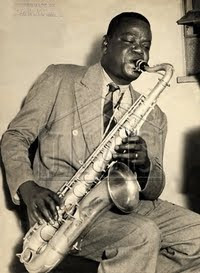Choro Vivo - A Danish Choro Trio
 |
| Choro Vivo |
Thanks to globalization and the internet knowledge about choro music has spread outside Brazil during the past fifteen years. Today there are musicians all over the world playing choro inspired by the great Brazilian performers of the past and present. Here I like to introduce a Danish choro ensemble from Copenhagen - Choro Vivo that has just released a debut CD.
 |
| Martin Heap, 7 string guitar, cavaquinho |
Choro Vivo was formed by Martin Heap in January 2010. Martin Heap (b.1974) has studied guitar at The Royal Danish Academy of Music in Copenhagen and graduated in 2003. In 2001 he visited Rio de Janeiro for the first time and was inspired to explore and play choro. As a result, he stayed in Rio from 2004 to 2007 and studied with the renowned choro guitarist Mauricio Carrilho and was introduced to the Cariocan choro community. In 2005 Martin Heap produced a CD featuring a choro ensemble named Choro Brasil Scandinavia that included himself and another Scandinavian guitarist besides three well known Brazilian musicians. The CD and the ensemble was presented in live performance in Copenhagen, July 2005 (- you can read more about Choro Brasil Scandinavia following this link ). Thanks to his many contacts in Brazil Martin Heap has organized a pioneering work in Denmark to introduce choro to the public, and his enthusiasm and initiative has so far also resulted in the formation of the trio Choro Vivo in 2010. The original formation of the trio comprised violinist Alexander Kraglund (b. 1985) and guitarist Bjarke Mulder (b. 1980) besides Martin Heap on 7 string guitar and cavaquinho. Today Choro Vivo has two new members replacing Kraglund and Mulder.
 |
| Martin Buono, guitar |
Martin Buono (b.1986) has studied classical guitar at The Royal Danish Academy of Music in Copenhagen and graduated as soloist in 2014. He is the one part of the prizewinning Copenhagen Guitar Duo excelling in the classical guitar repertoire. Martin Buono has also studied flamenco guitar in Spain and is involved in other music projects besides Choro Vivo, learn more at his official website, here
 |
| Marco Spallanzani, bandolim |
Marco Spallanzani is from Modena, Italy, but has been living in Copenhagen since 1985. He has studied guitar at the rhythmic Music Conservatory in Copenhagen and graduated 1992.Besides playing guitar Marco Spallanzani is a composer, arranger and tutor, he also plays other string instruments than guitar and has specialized in playing bandolim in Choro Vivo. Learn more about his career and other projects at the official website, here
 |
| Choro Vivo, CD front (Gateway Music, 2015) |
The debut CD of Choro Vivo was recorded last year and released earlier this month by Gateway Music in a downloadable version, here and is also available in streaming audio at the website of Choro Vivo. The CD has nine tracks, the repertoire is devoted to well known classic choro compositions in arrangements by Choro Vivo. Some tracks have guest appearance by accordionist Fransesco Cali , percussionist Afonso Corrêa and Brazilian guitarist Glauber Seixas.
 |
| Choro Vivo with guest performers |
The first track, 'Odeon' (Ernesto Nazareth), is the trio's interpretation of the well known tune and showcasting the bandolim as lead voice. Next tune is Pixinguinha's 'Um A Zero' featuring the trio extended with accordionist Francesco Cali, percussionist Afonso Corrêa and Glauber Seixas on 7 string guitar - the tune has great playing by all including solo exchange and improvisation by Spallanzani's bandolim and Cali's accordion. Then follows Anacleto de Medeira's 'Yara' by the trio showcasting Martin Heap on the cavaquinho as solo voice, Martin Buono on guitar and Glauber Seixas on 7 string guitar replacing Spallanzani. Next, two more classics by Pixinguinha, 'Os Oitos Batutas' and 'Naquele Tempo' - the last mentioned extended with Cali on accordion, while 'Os Oitos Batutas' adds Corrêa on percussion. A choro by Paulinho da Viola influenced by the guitar style of Canhoto da Paraíba, 'Rosinha, essa Menina' is next featuring great playing by Martin Buono and exemplary support by Heap and Spallanzani, and this is followed by an excellent arrangenment and reading of Villa-Lobos' 'Mazurka-Choro' by the trio. The two remaining tracks are devoted to a reading of Jacob do Bandolim's 'Feia' and E.Nazareth's 'Travesso' - the last mentioned has also been recorded in a live presentation uploaded at YouTube and is inserted below to give you an impression of Choro Vivo in performance.
It's a thrill to learn that choro music is taken good care of and presented with due respect to and affirmative understanding of the Brazilian tradition by Choro Vivo - the future of choro in Denmark looks bright with the release of the trio's debut CD, definitly recommended!
---
Jo
choromusic.blogspot@gmail.com




